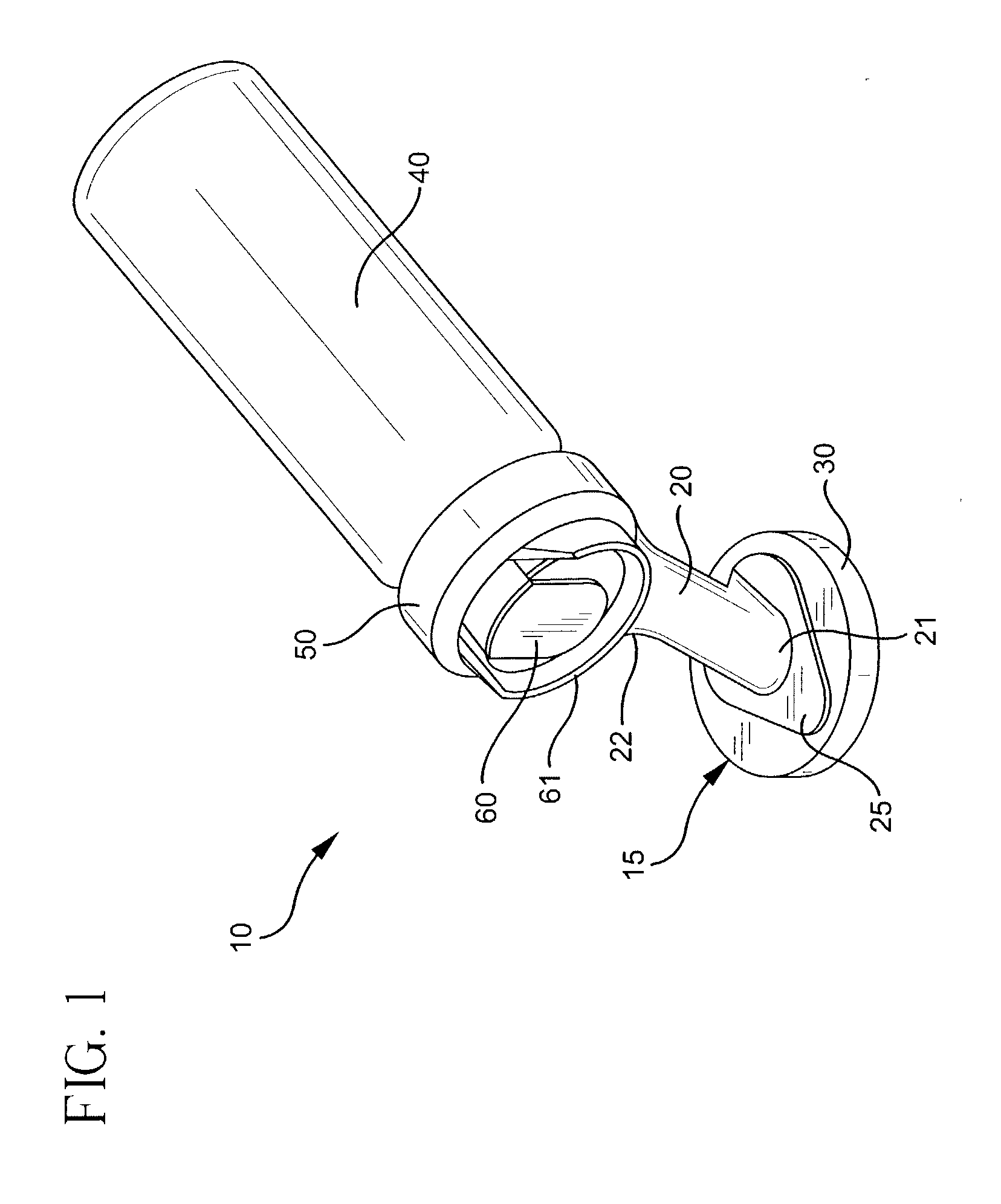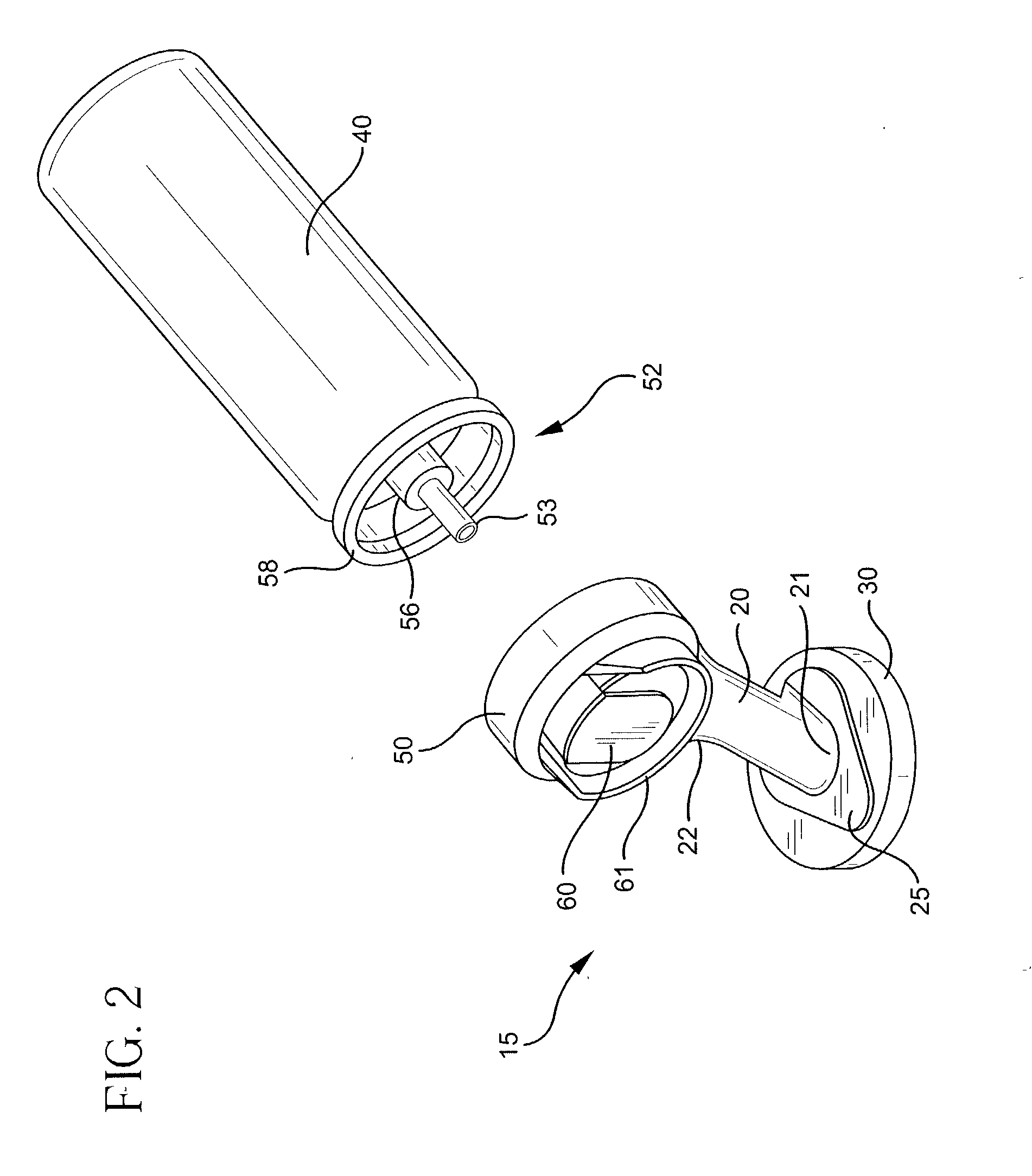Aerosol patient preparatory applicator
a technology of applicators and aerosols, which is applied in the direction of brushes, transportation and packaging, packaging, etc., can solve the problems of increased difficulty in adjusting
- Summary
- Abstract
- Description
- Claims
- Application Information
AI Technical Summary
Benefits of technology
Problems solved by technology
Method used
Image
Examples
Embodiment Construction
[0037] As used herein, the term "proximal" refers to a location on the applicator for an antimicrobial solution of this invention that, during normal use, is closest to the clinician using the device and farthest from the patient in connection with whom the device is used. Conversely, the term "distal" refers to a location on the applicator of this invention that, during normal use, is farthest from the clinician using the device and closest to the patient in connection with whom the device is used.
[0038] As used herein, the term "top", "up" or "upwardly" refers to a location on the applicator for an antimicrobial solution of this invention that, during normal use, is radially away from the device and away from the patient's skin. Conversely, as used herein, the term "bottom", "down" or "downwardly" refers to a location on the applicator of this invention that, during normal use, is radially away from the device and toward the patient's skin.
[0039] As used herein, the term "in" or "...
PUM
 Login to View More
Login to View More Abstract
Description
Claims
Application Information
 Login to View More
Login to View More - R&D
- Intellectual Property
- Life Sciences
- Materials
- Tech Scout
- Unparalleled Data Quality
- Higher Quality Content
- 60% Fewer Hallucinations
Browse by: Latest US Patents, China's latest patents, Technical Efficacy Thesaurus, Application Domain, Technology Topic, Popular Technical Reports.
© 2025 PatSnap. All rights reserved.Legal|Privacy policy|Modern Slavery Act Transparency Statement|Sitemap|About US| Contact US: help@patsnap.com



